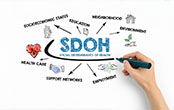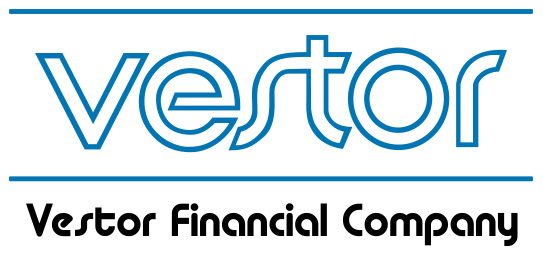Employee Benefits Report – October 2025
Mental Health Benefits Go Mainstream: What Employers Need to Know
 Once considered a niche offering or a reactive add-on, mental health benefits have now moved to the center of the employee experience. In 2025, nearly half of U.S. employers offer some form of mental health support beyond traditional EAPs—a sharp rise from just 30% in 2023. This shift isn’t just cultural; it’s strategic. Read on for details.
Once considered a niche offering or a reactive add-on, mental health benefits have now moved to the center of the employee experience. In 2025, nearly half of U.S. employers offer some form of mental health support beyond traditional EAPs—a sharp rise from just 30% in 2023. This shift isn’t just cultural; it’s strategic. Read on for details.
Balancing Benefits Costs with Talent Strategy in 2025

In today’s competitive labor market, benefits managers are walking a tightrope: controlling rising costs while delivering packages that attract and retain top talent. According to SHRM’s 2025 Employee Benefits Survey, this balancing act is now one of the most pressing challenges facing HR leaders. Read on for details.
Supplemental Health Products Surge as Employees Seek Layered Coverage

In a year defined by rising healthcare costs and shifting employee expectations, supplemental health insurance products are experiencing a notable surge. According to LIMRA’s latest workplace benefits sales data, accident, critical illness, and hospital indemnity insurance sales rose 11% year-over-year through the third quarter of 2024. Read on for details.
CBT: A Strategic Tool for Mental Health Benefits
 Cognitive Behavioral Therapy (CBT) is a short-term, evidence-based approach that helps individuals identify and reframe negative thought patterns to improve emotional well-being. By focusing on the connection between thoughts, feelings, and behaviors, CBT empowers employees to manage stress, anxiety, and depression—conditions that account for a significant portion of workplace absenteeism and productivity loss. Read on for details.
Cognitive Behavioral Therapy (CBT) is a short-term, evidence-based approach that helps individuals identify and reframe negative thought patterns to improve emotional well-being. By focusing on the connection between thoughts, feelings, and behaviors, CBT empowers employees to manage stress, anxiety, and depression—conditions that account for a significant portion of workplace absenteeism and productivity loss. Read on for details.
Employee Benefits Report – Sepember 2025
SECURE 2.0 Implementation: A New Era in Retirement Planning
 The SECURE 2.0 Act, passed in late 2022 and now in active rollout through 2025, is reshaping the landscape of workplace retirement planning. Designed to expand access, modernize plan design, and improve financial preparedness, the law introduces over 90 new provisions—many of which are now surfacing in HR departments across the country. Read on for details.
The SECURE 2.0 Act, passed in late 2022 and now in active rollout through 2025, is reshaping the landscape of workplace retirement planning. Designed to expand access, modernize plan design, and improve financial preparedness, the law introduces over 90 new provisions—many of which are now surfacing in HR departments across the country. Read on for details.
Putting Health Equity into Practice: SDOH Integration Takes Center Stage

As healthcare costs continue their upward trajectory and disparities remain persistent across employee populations, a new lens is reshaping how employers approach benefits design—Social Determinants of Health (SDOH). From zip code to food access, education to transportation, SDOH factors account for more than 80% of health outcomes. In 2025, savvy employers are turning this challenge into opportunity. Read on for details.
Self-Funding in 2025: Still Strong, But Evolving Fast

Self-funded employee benefit plans continue to be a powerful tool for employers looking to control costs and customize coverage. As we move further into 2025, momentum remains strong. But with rising healthcare expenses and shifting regulatory pressures, both employers and their brokers are being called to rethink and refine their approaches. Read on for details.
Stop-Loss Costs: A Growing Challenge
 One of the most pressing issues in self-funding today is the surge in stop-loss premiums. Factors like specialty drug costs, rising chronic condition prevalence, and multi-million-dollar inpatient claims have made risk coverage more expensive and complex.Read on for details.
One of the most pressing issues in self-funding today is the surge in stop-loss premiums. Factors like specialty drug costs, rising chronic condition prevalence, and multi-million-dollar inpatient claims have made risk coverage more expensive and complex.Read on for details.
Employee Benefits Report – August 2025
New Compliance Rules Ahead: What the OBBB Means for Your Benefits Team
 Signed into law by President Trump on July 4th, the “One Big Beautiful Bill” (OBBB) is already making waves in tax policy and Social Security headlines. But for employee benefits administrators, the bill quietly ushers in key updates that will reshape plan design, compliance, and employee communication in the months ahead. Read on for details.
Signed into law by President Trump on July 4th, the “One Big Beautiful Bill” (OBBB) is already making waves in tax policy and Social Security headlines. But for employee benefits administrators, the bill quietly ushers in key updates that will reshape plan design, compliance, and employee communication in the months ahead. Read on for details.
AI-Powered Benefits Administration: The Next Frontier in HR Efficiency

As artificial intelligence (AI) continues to transform industries, employee benefits administration is emerging as one of the most promising areas for innovation. From streamlining open enrollment to delivering personalized support and ensuring compliance, AI-powered tools are helping HR teams do more with less—while improving the employee experience along the way. Read on for details.
Mental Health Parity Compliance: What Employers Need to Know in 2025

As mental health continues to take center stage in workplace wellness, employers are under increasing pressure to ensure their group health plans comply with the Mental Health Parity and Addiction Equity Act (MHPAEA). For HR leaders, CFOs, and plan administrators—2025 is shaping up to be a pivotal year for parity compliance, with heightened regulatory scrutiny and a renewed focus on enforcement. Read on for details.
Key Effective Dates for Benefits-Related Provisions in OBBB
 Benefits Admin Action Items
Benefits Admin Action Items
- Review documents with TPAs by Q4 2025
- Prep open enrollment comms for 2026
- Coordinate payroll + compliance for updated tax rules
- Consider offering Trump Accounts + Dep-Care FSA
- Track Medicaid/SNAP reforms for impact on hourly workforce.
Life & Health Insurance Advisor – Fall 2025
What the “One Big Beautiful Bill” Could Mean for Your Health Insurance
 A new law passed by Congress—the One Big Beautiful Bill Act (OBBB)—includes several changes that may affect how Americans access and pay for health insurance. While the law covers a wide range of budget and policy areas, it also introduces updates to Medicaid, the Affordable Care Act (ACA) Marketplace, and Health Savings Account (HSA) rules that could influence your coverage in the coming years. Read on for details.
A new law passed by Congress—the One Big Beautiful Bill Act (OBBB)—includes several changes that may affect how Americans access and pay for health insurance. While the law covers a wide range of budget and policy areas, it also introduces updates to Medicaid, the Affordable Care Act (ACA) Marketplace, and Health Savings Account (HSA) rules that could influence your coverage in the coming years. Read on for details.
What Are Living Benefits in Life Insurance—and Why They Matter
 Most people think of life insurance as something that helps their loved ones after they’re gone. But did you know that some life insurance policies can also help you while you’re still alive? Read on for details.
Most people think of life insurance as something that helps their loved ones after they’re gone. But did you know that some life insurance policies can also help you while you’re still alive? Read on for details.
Why Human Guidance Still Matters in a Digital World
 In today’s world of apps, algorithms, and instant quotes, it’s easy to assume that insurance and financial decisions can be made with just a few clicks. But more and more people are discovering that when it comes to protecting their health, family, and future, human guidance still matters. Read on for details.
In today’s world of apps, algorithms, and instant quotes, it’s easy to assume that insurance and financial decisions can be made with just a few clicks. But more and more people are discovering that when it comes to protecting their health, family, and future, human guidance still matters. Read on for details.
2025 HSA Tips That Can Save You Money
Health Savings Accounts (HSAs) are more powerful than ever in 2025. Here’s how to make the most of yours:
1. Know the Limits
You can contribute up to $4,300 if you have individual coverage, or $8,550 for family coverage. If you’re 55 or older, you can add an extra $1,000.
Read on for details.
Employee Benefits Report – July 2025
The Rise of Flexible Compensation: A Game-Changer for Modern Workplaces

Flexible Compensation:A Necessary Evolution In today’s fast-evolving job market, flexible compensation is redefining how companies attract and retain talent. Read on for details.
Balancing Employee Wellbeing and Financial Pressures: The Evolving Workplace Benefits Landscape

In today’s economic climate, businesses are facing rising costs and inflationary pressures, leading to a fundamental reassessment of employee benefits programs. While mental health and wellbeing initiatives remain a priority for employers, there is a growing demand for measurable impact and cost-efficient solutions rather than superficial perks. Read on for details.
How Businesses Are Using Data Analytics to Optimize Employee Benefits Engagement
 In today’s competitive job market, businesses are increasingly leveraging data analytics
In today’s competitive job market, businesses are increasingly leveraging data analytics
to enhance employee benefits engagement, ensuring that workers fully utilize available resources. Traditional benefits programs often suffer from low participation rates due to lack of awareness, complexity, or misalignment with employee needs. Read on for details.
The New Benefits Employees Want—And Why Employers Are Hesitant
 As workplace benefits evolve, employees are increasingly demanding personalized health and wellness perks that go beyond traditional offerings. Two major trends—weight loss drug coverage and fertility benefits—are reshaping employer-sponsored healthcare, but companies remain divided on whether to fully embrace these changes.Read on for details.
As workplace benefits evolve, employees are increasingly demanding personalized health and wellness perks that go beyond traditional offerings. Two major trends—weight loss drug coverage and fertility benefits—are reshaping employer-sponsored healthcare, but companies remain divided on whether to fully embrace these changes.Read on for details.
Employee Benefits Report – June 2025
Preventive Care Incentives: Investing in Long-Term Savings

Preventive healthcare programs are proving to be one of the most effective cost-saving strategies for employers. By encouraging regular screenings, wellness programs, and chronic disease management, companies can reduce hospitalizations and emergency care costs. Read on for details.
Retirement Plan Enhancements: How Employers Are Strengthening Financial Wellness

As retirement security becomes a grow¬ing concern, employers are taking pro¬active steps to enhance retirement ben¬efits, ensuring employees have the tools and re¬sources needed for long-term financial stability.
Read on for details.
Are Cybersecurity in Benefits & Retirement Accounts: Protecting Savings from Fraud

The debate over remote and hybrid work continues as major employers pull in opposite directions. Recent full-time return-to-office (RTO) mandates from organizations like the federal government, Amazon, and AT&T signal a shift away from remote work. Read on for details.
Why Medical Travel Benefits Matter
 With provider shortages and long waitlists, employees often struggle to access timely care. Medical travel benefits help bridge this gap, ensuring workers receive necessary treatments without financial strain.Read on for details.
With provider shortages and long waitlists, employees often struggle to access timely care. Medical travel benefits help bridge this gap, ensuring workers receive necessary treatments without financial strain.Read on for details.
Employee Benefits Report – May 2025
Employers Expand Family Benefits Amid Reproductive Health Concerns
 Recent surveys indicate heightened anx¬iety among many U.S. employees plan¬ning to conceive or adopt children. This follows the 2024 election results and ongoing legal developments regarding reproduc¬tive rights. Read on for details.
Recent surveys indicate heightened anx¬iety among many U.S. employees plan¬ning to conceive or adopt children. This follows the 2024 election results and ongoing legal developments regarding reproduc¬tive rights. Read on for details.
Companies Could Face Fines Over Retirement Plan Mismanagement
 A recent analysis of government retire¬ment plan filings suggests compa¬nies across the country could be fall¬ing short in properly managing their employ¬ees’ 401(k) and 403(b) plans, exposing them to the possibility of regulatory fines and penalties.
A recent analysis of government retire¬ment plan filings suggests compa¬nies across the country could be fall¬ing short in properly managing their employ¬ees’ 401(k) and 403(b) plans, exposing them to the possibility of regulatory fines and penalties.
Read on for details.
Are Employers Making a Big Mistake by Axing Remote Work?
 The debate over remote and hybrid work continues as major employers pull in op¬posite directions. Recent full-time return-to-office (RTO) mandates from organizations like the federal government, Amazon, and AT&T signal a shift away from remote work. Read on for details.
The debate over remote and hybrid work continues as major employers pull in op¬posite directions. Recent full-time return-to-office (RTO) mandates from organizations like the federal government, Amazon, and AT&T signal a shift away from remote work. Read on for details.
How Workplace Accessibility Drives Profits
 With over 61 million adults with disabilities nationwide, crafting accommodating work environments pays dividends for enterprises. Recent statistics indicate that implementing accessibility measures delivers measurable financials upsides. Read on for details.
With over 61 million adults with disabilities nationwide, crafting accommodating work environments pays dividends for enterprises. Recent statistics indicate that implementing accessibility measures delivers measurable financials upsides. Read on for details.
Life & Health Insurance Advisor – Summer 2025
How Disability Insurers Are Streamlining Efficiency with Technology
 The disability insurance industry is undergoing a significant transformation, driven by advancements in artificial intelligence (AI), telehealth, and simplified underwriting. These innovations are enhancing the efficiency of policy approvals, improving access to claims assessments, and reducing costs by minimizing fraudulent claims. Read on for details.
The disability insurance industry is undergoing a significant transformation, driven by advancements in artificial intelligence (AI), telehealth, and simplified underwriting. These innovations are enhancing the efficiency of policy approvals, improving access to claims assessments, and reducing costs by minimizing fraudulent claims. Read on for details.
Medicare Costs and the Push for Long-Term Sustainability
 Medicare remains a critical lifeline for millions of Americans, but rising healthcare costs and regulatory changes are putting significant pressure on its funding. As policymakers grapple with these challenges, new regulations are reshaping benefits and premiums, while legislators explore long-term solutions to ensure Medicare remains viable for future generations. Read on for details.
Medicare remains a critical lifeline for millions of Americans, but rising healthcare costs and regulatory changes are putting significant pressure on its funding. As policymakers grapple with these challenges, new regulations are reshaping benefits and premiums, while legislators explore long-term solutions to ensure Medicare remains viable for future generations. Read on for details.
Cybersecurity in Retirement Accounts: Safeguarding Savings from Fraud and Cyber Threats
 As digital financial systems become more advanced, the cybersecurity of retirement accounts is an increasingly urgent concern. With trillions of dollars invested in 401(k) plans, IRAs, pensions, and annuities, cybercriminals are targeting retirement funds more aggressively than ever. Read on for details.
As digital financial systems become more advanced, the cybersecurity of retirement accounts is an increasingly urgent concern. With trillions of dollars invested in 401(k) plans, IRAs, pensions, and annuities, cybercriminals are targeting retirement funds more aggressively than ever. Read on for details.
Six Healthcare Trends That Could Save You Dollars
In an era of rising healthcare costs, staying ahead of industry trends can make a real difference in how much you spend on medical care. Whether it’s smarter insurance pricing, expanded telehealth options, or AI-driven fraud prevention, small shifts in the healthcare system are creating opportunities for consumers to cut expenses without sacrificing quality.Read on for details.
Employee Benefits Report – April 2025
Closing the Savings Gap: Empowering Women for Retirement

A new generation of women is stepping up to take control of their financial futures, but some still face barriers to saving enough for a secure retirement. Employers have a vital role to play in providing the tools and resources women need to close the retirement savings gap. Read on for details.
Higher Confidence Drives Increased 401(k) and HSA Contributions
 Americans are feeling more confident about their finances and retirement readiness, according to new data on 401(k) and health savings account (HSA) balances. Supported by greater savings rates and positive market performance, average account balances grew significantly from 2023 to 2024. Read on for details.
Americans are feeling more confident about their finances and retirement readiness, according to new data on 401(k) and health savings account (HSA) balances. Supported by greater savings rates and positive market performance, average account balances grew significantly from 2023 to 2024. Read on for details.
What’s Trending in Employee Benefits? Personalization, Financial Help
 Employers are constantly evaluating their benefits offerings to find ways to attract and retain top talent while also controlling costs. Read on for details.
Employers are constantly evaluating their benefits offerings to find ways to attract and retain top talent while also controlling costs. Read on for details.
Is Your Paid Time Off Keeping Candidates Away?
 Job seekers nowadays have endless options if they’re looking to switch jobs. With such a tight labor market, they can afford to be selective. Read on for details.
Job seekers nowadays have endless options if they’re looking to switch jobs. With such a tight labor market, they can afford to be selective. Read on for details.
Employee Benefits Report – March 2025
Is Your Company’s Unused PTO Liability Putting You at Risk?
 Nearly half of employees don’t use all their paid time off (PTO). This trend signals problems for both workers and employers. Here’s what HR needs to know— and do—about unused vacation time. Read on for details.
Nearly half of employees don’t use all their paid time off (PTO). This trend signals problems for both workers and employers. Here’s what HR needs to know— and do—about unused vacation time. Read on for details.
The Smart Employer’s Guide to Combating Rising Healthcare Costs in 2025
 While no one knows what 2025 will bring from an economic point of view and there are several factors that are beyond the control of organizations, they can implement various strategies to man- age a major expense, namely healthcare.
While no one knows what 2025 will bring from an economic point of view and there are several factors that are beyond the control of organizations, they can implement various strategies to man- age a major expense, namely healthcare.
Read on for details.
Wages Set to Reflect 2024 Levels as Labor Market Pressures Ease
 Compensation budgets are holding steady for 2025, even as concerns over talent attraction and retention ease. Employers plan to allocate similar salary increases as in 2024, according to expert projections. Read on for details.
Compensation budgets are holding steady for 2025, even as concerns over talent attraction and retention ease. Employers plan to allocate similar salary increases as in 2024, according to expert projections. Read on for details.
Employers Face Third Year of Double-Digit Healthcare Increases
 Global employers are bracing for another year of substantial healthcare cost increases, marking the third consecutive year of double-digit growth, according to new industry data. The trend shows no signs of slowing, creating mounting pressure for organizations to develop strategic responses to these escalating expenses. Read on for details.
Global employers are bracing for another year of substantial healthcare cost increases, marking the third consecutive year of double-digit growth, according to new industry data. The trend shows no signs of slowing, creating mounting pressure for organizations to develop strategic responses to these escalating expenses. Read on for details.
Employee Benefits Report – February 2025
Money Worries Hurt Mental Health, Work Performance
 Finances cause moderate to significant anxiety for 62%, up since 2023. This takes a toll at work – 51% say money stress makes it difficult to focus and perform. Nearly 1 in 5 say it impacts their work ability “all the time,” signaling an urgent issue for employers to address. Read on for details.
Finances cause moderate to significant anxiety for 62%, up since 2023. This takes a toll at work – 51% say money stress makes it difficult to focus and perform. Nearly 1 in 5 say it impacts their work ability “all the time,” signaling an urgent issue for employers to address. Read on for details.
How Your Benefits Package Can Give You a Competitive Edge
 In today’s job market, a robust benefits package is vital for employers looking to recruit and retain top talent. As workforce dynamics and employee needs evolve, companies that fail to adapt their offerings risk falling behind rivals that are more in tune with workers’ wants. Read on for details.
In today’s job market, a robust benefits package is vital for employers looking to recruit and retain top talent. As workforce dynamics and employee needs evolve, companies that fail to adapt their offerings risk falling behind rivals that are more in tune with workers’ wants. Read on for details.
How Employers Can Prepare for Pay Equity Scrutiny
 As pay transparency and equity laws gain momentum across the United States, federal and state authorities are increasingly scrutinizing employers to ensure compliance. Read on for details.
As pay transparency and equity laws gain momentum across the United States, federal and state authorities are increasingly scrutinizing employers to ensure compliance. Read on for details.
What Employers Should Know About Overtime Rules
 Overtime regulations are essential for fair employee compensation beyond the standard 40-hour workweek. Employers must grasp these rules to prevent misclassification, legal issues, and penalties. Read on for details.
Overtime regulations are essential for fair employee compensation beyond the standard 40-hour workweek. Employers must grasp these rules to prevent misclassification, legal issues, and penalties. Read on for details.
Life & Health Insurance Advisor – Spring 2025
What’s New for Medicare in 2025?
 In 2025 several important changes and updates are being introduced to the Medicare program that will impact beneficiaries, providers, and insurers. These updates aim to address ongoing healthcare challenges, improve access to essential services, and make healthcare more affordable for older adults and those with disabilities. Read on for details.
In 2025 several important changes and updates are being introduced to the Medicare program that will impact beneficiaries, providers, and insurers. These updates aim to address ongoing healthcare challenges, improve access to essential services, and make healthcare more affordable for older adults and those with disabilities. Read on for details.
5 Ways to Tell If You’re on Track for Retirement — and 5 Things to Do if You Need to Catch Up
 Retirement planning is a vital part of financial wellness, but how do you know if you’re on track? Here are five ways to assess your progress, followed by five expert-recommended strategies to catch up if you’re falling behind.Read on for details.
Retirement planning is a vital part of financial wellness, but how do you know if you’re on track? Here are five ways to assess your progress, followed by five expert-recommended strategies to catch up if you’re falling behind.Read on for details.
Why Life Insurance is a Must-Have for Homeowners
 Owning a home is one of the largest financial commitments many individuals or families will ever make. Regardless of whether the household consists of young children, couples, or single occupants, life insurance is a crucial financial tool for protecting this investment and providing peace of mind. Read on for details.
Owning a home is one of the largest financial commitments many individuals or families will ever make. Regardless of whether the household consists of young children, couples, or single occupants, life insurance is a crucial financial tool for protecting this investment and providing peace of mind. Read on for details.
The Digital Shift in Healthcare: Embracing Telehealth and Virtual Care
The healthcare industry is undergoing a significant transformation as more services transition to digital platforms, prioritizing telehealth and virtual care. This shift is driven by advancements in technology, the need for accessible care, and the convenience it provides for both patients and providers. Read on for details.
